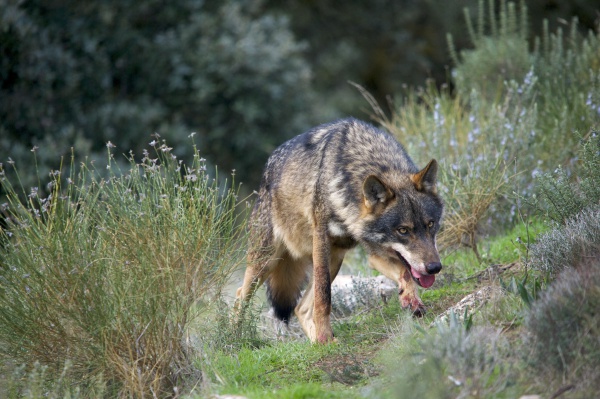Facts About Iberian wolf
The Iberian wolf, often referred to as the Spanish wolf, is an intriguing subspecies of the grey wolf that inhabits the northwest of the Iberian Peninsula, particularly northern Portugal and northwestern Spain. With an estimated population of approximately 2,200 to 2,700 individuals, it boasts the largest wolf population in Western Europe. Interestingly, despite being the only wolf subspecies in Western Europe where hunting is legal, Spain issues very few hunting permits each year.
Scientifically known as Canis lupus signatus, the Iberian wolf distinguishes itself from other European wolves through differences in skull shape, mitochondrial DNA, and microsatellites. It is genetically distinct from the Italian wolf and possesses some of the most unique genetic markers in Europe. Visually, it is recognized by its slimmer build, white markings on its upper lips, dark tail marks, and unique front leg patterns.
These wolves typically live in small packs and have a diverse diet, preying on wild boars, rabbits, deer, ibexes, small carnivores, and even fish. They play a crucial role in their ecosystem by controlling wild boar populations, which indirectly benefits endangered species like the capercaillie.
Over the years, the distribution and status of the Iberian wolf have fluctuated. Like many wolf populations in Europe, they faced severe declines due to human persecution but began to naturally rebound in the 1960s. Today, their numbers are estimated to be over 2,000, with distinct genetic groups identified in both Portugal and Spain. Nevertheless, their conservation is still challenged by habitat destruction, human persecution, and illegal hunting.
A notable incident in 2009 brought the Iberian wolf to widespread attention. A photograph capturing an Iberian wolf leaping over a cattle pen in Ávila won a prestigious award but was later disqualified. It was revealed that the wolf was tame and could be rented from a wildlife center. This controversy highlighted the complexities of conservation and human-wildlife interactions in the region.

 Morocco
Morocco